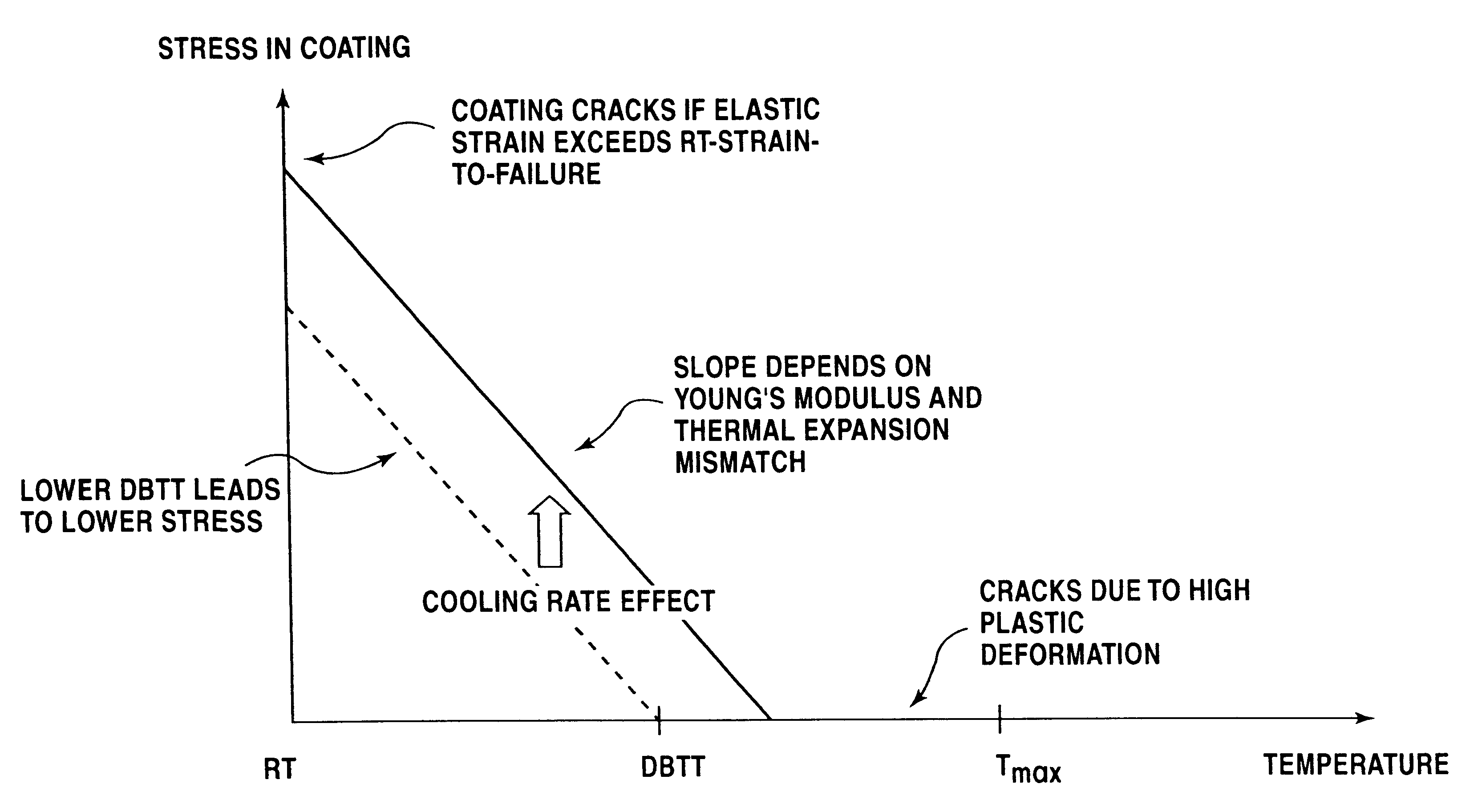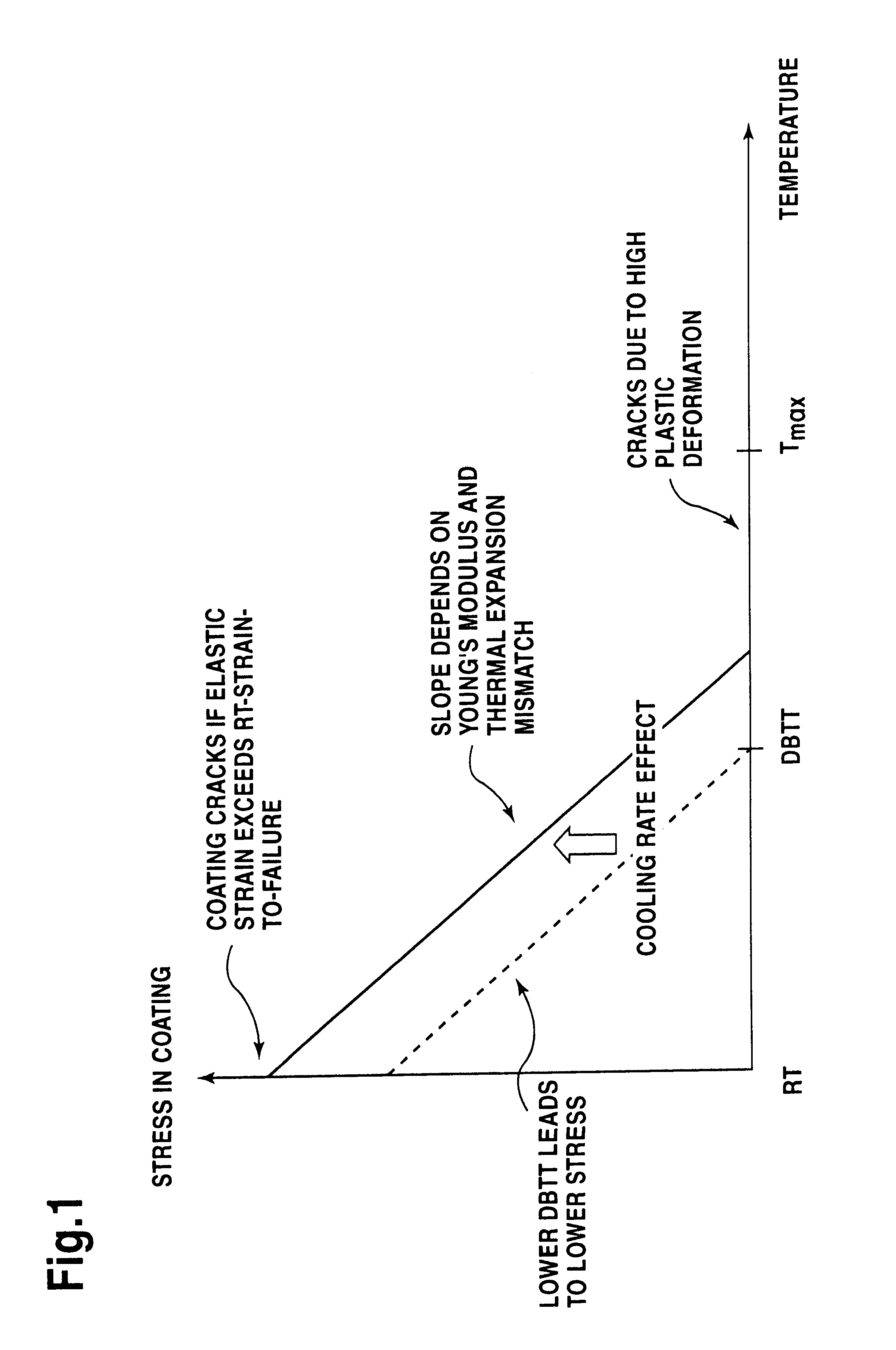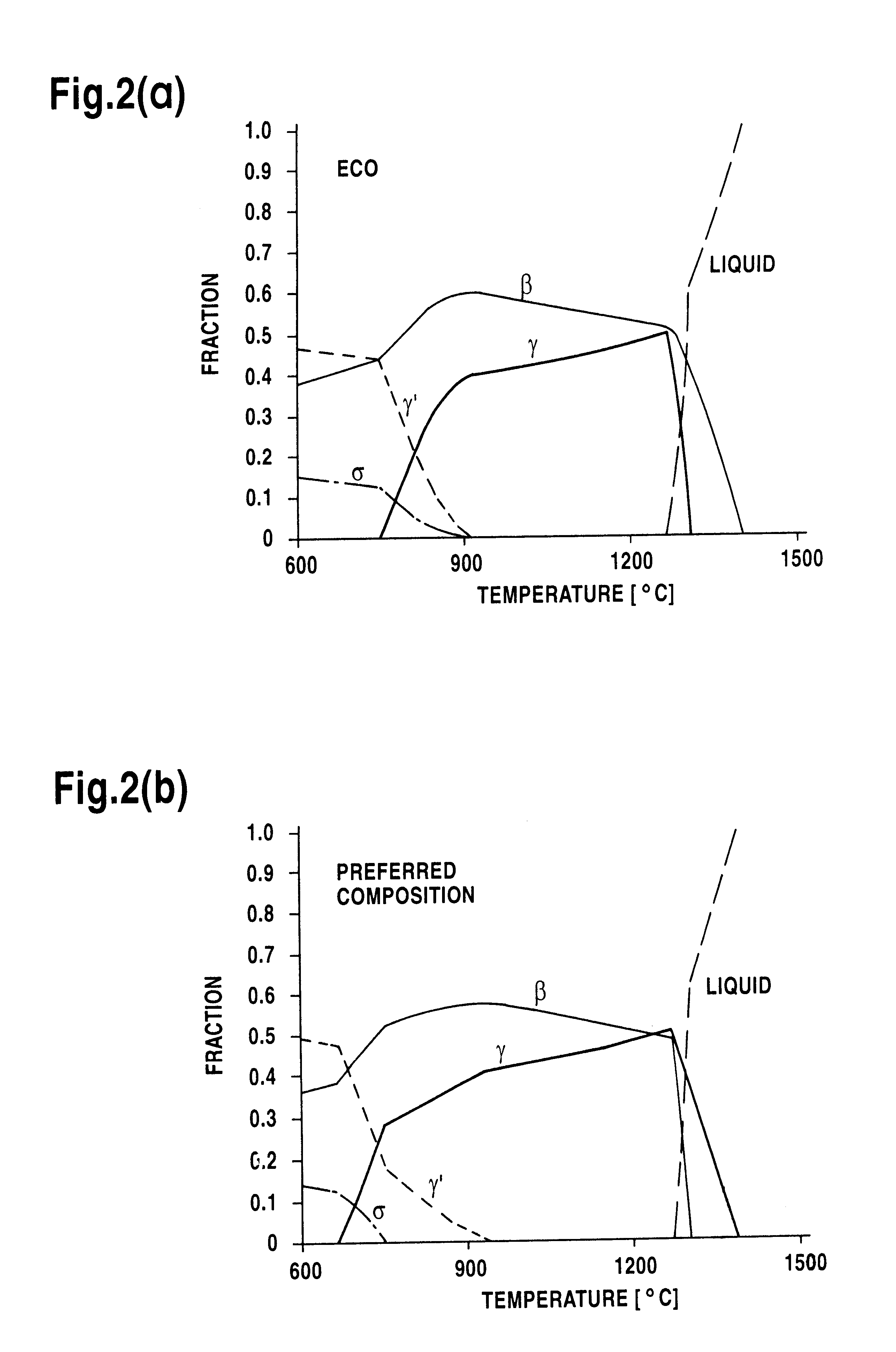Coating composition for high temperature protection
a coating composition and high temperature protection technology, applied in the direction of superimposed coating process, coating, transportation and packaging, etc., can solve the problems of low toughness, undesirable phase structure of the coating and interdiffusion layer, and insufficient oxidation and corrosion protection of aluminum coatings, etc., to achieve the effect of improving the mechanical behavior
- Summary
- Abstract
- Description
- Claims
- Application Information
AI Technical Summary
Benefits of technology
Problems solved by technology
Method used
Image
Examples
Embodiment Construction
In the practice of the invention, coatings with compositions according to the present invention were produced by low pressure plasma spraying. A typical nickel base superalloy of the type used in gas turbine engines, known as CMSX4 (CMSX=trademark of Cannon Muskegan Co) and having a nominal composition of 9.5% Co, 6.5% Cr, 5.6% Al, 6.4% W, 6.5% Ta, 0.5% Mo, 1% Ti, 0.1% Hf, balance Ni was used as substrate for testing. The coating compositions which have been tested, are given in tables 1 (b) and 2. The performance of the coatings was evaluated by means of (i) isothermal oxidation at 1000 and 1050.degree. C. in a laboratory furnace, (ii) a water spray quench test and (iii) thermomechanical fatigue (TMF) testing at various upper temperature limits (800 to 1050.degree. C.).
It is known that essentially two failure mechanisms control the thermomechanical fatigue (TMF) behavior of coated articles. One failure mechanism occurs in the low temperature region when stress builds up in the coat...
PUM
| Property | Measurement | Unit |
|---|---|---|
| temperatures | aaaaa | aaaaa |
| temperature | aaaaa | aaaaa |
| temperature | aaaaa | aaaaa |
Abstract
Description
Claims
Application Information
 Login to View More
Login to View More - R&D
- Intellectual Property
- Life Sciences
- Materials
- Tech Scout
- Unparalleled Data Quality
- Higher Quality Content
- 60% Fewer Hallucinations
Browse by: Latest US Patents, China's latest patents, Technical Efficacy Thesaurus, Application Domain, Technology Topic, Popular Technical Reports.
© 2025 PatSnap. All rights reserved.Legal|Privacy policy|Modern Slavery Act Transparency Statement|Sitemap|About US| Contact US: help@patsnap.com



